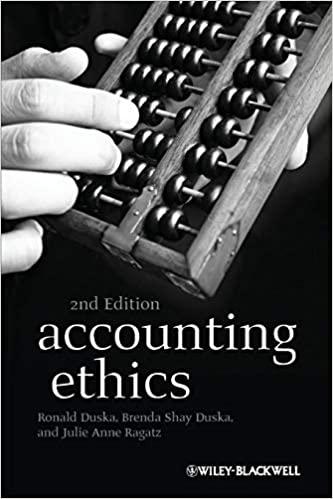
Refer to Example 42 in text Section 18-5e. Albert owns 100% of A Corporation, Betty is the sole proprietor of B Company, and Cai is the sole proprietor of C Company. Each business generated $500,000 of taxable income and before-tax cash flow. A Corporation and B Company produce a product, but c Company provides accounting services. A Corporation will distribute all of its after-tax income to Albert. All three owners face a 37% marginal tax rate on ordinary income. B Company qualifies for the 199A deduction, but c Company does not because it provides accounting services and its taxable income exceeds the threshold for that deduction. Assume the tax rate applied to dividend income equals the top 20% net long-term capital gain rate plus the 3.8% net investment income tax rate. The corporate tax rate is 21% and 3 199A deduction is 20%. What will be the values of A Corporation, B Company, and C Company after three years? Assume that each business (a) required a $5,000,000 initial investment, (b) earns an annual 10% before-tax rate of return on the beginning-of-the-year investment, (c) can reinvest its after-tax cash flow back into the business, and (d) there is no unrealized appreciation of their assets. A Corporation B Company C Company Initial investment $5,000,000 $5,000,000 $5,000,000 Taxable income to owners in year 1 395,000 400,000 500,000 After-tax cash flow for year 1 300,990 352,000 315,000 Investment at end of year 1 Taxable income to owners in year 2 After-tax cash flow for year 2 Investment at end of year 2 Taxable income to owners in year 3 DOME DODON DION After-tax cash flow for year 3 Investment at end of year 3 Feedback Check My Work Corporations have certain advantages over unincorporated businesses, such as easier capital formation, unlimited life, and limited liability. However, double taxation presents a potentially sizable tax disadvantage. The TCJA of 2017 changed the extent of this disadvantage in two ways: 21% corporate tax rate and 199A deduction for qualified flow-through entities. Refer to Example 42 in text Section 18-5e. Albert owns 100% of A Corporation, Betty is the sole proprietor of B Company, and Cai is the sole proprietor of C Company. Each business generated $500,000 of taxable income and before-tax cash flow. A Corporation and B Company produce a product, but c Company provides accounting services. A Corporation will distribute all of its after-tax income to Albert. All three owners face a 37% marginal tax rate on ordinary income. B Company qualifies for the 199A deduction, but c Company does not because it provides accounting services and its taxable income exceeds the threshold for that deduction. Assume the tax rate applied to dividend income equals the top 20% net long-term capital gain rate plus the 3.8% net investment income tax rate. The corporate tax rate is 21% and 3 199A deduction is 20%. What will be the values of A Corporation, B Company, and C Company after three years? Assume that each business (a) required a $5,000,000 initial investment, (b) earns an annual 10% before-tax rate of return on the beginning-of-the-year investment, (c) can reinvest its after-tax cash flow back into the business, and (d) there is no unrealized appreciation of their assets. A Corporation B Company C Company Initial investment $5,000,000 $5,000,000 $5,000,000 Taxable income to owners in year 1 395,000 400,000 500,000 After-tax cash flow for year 1 300,990 352,000 315,000 Investment at end of year 1 Taxable income to owners in year 2 After-tax cash flow for year 2 Investment at end of year 2 Taxable income to owners in year 3 DOME DODON DION After-tax cash flow for year 3 Investment at end of year 3 Feedback Check My Work Corporations have certain advantages over unincorporated businesses, such as easier capital formation, unlimited life, and limited liability. However, double taxation presents a potentially sizable tax disadvantage. The TCJA of 2017 changed the extent of this disadvantage in two ways: 21% corporate tax rate and 199A deduction for qualified flow-through entities







